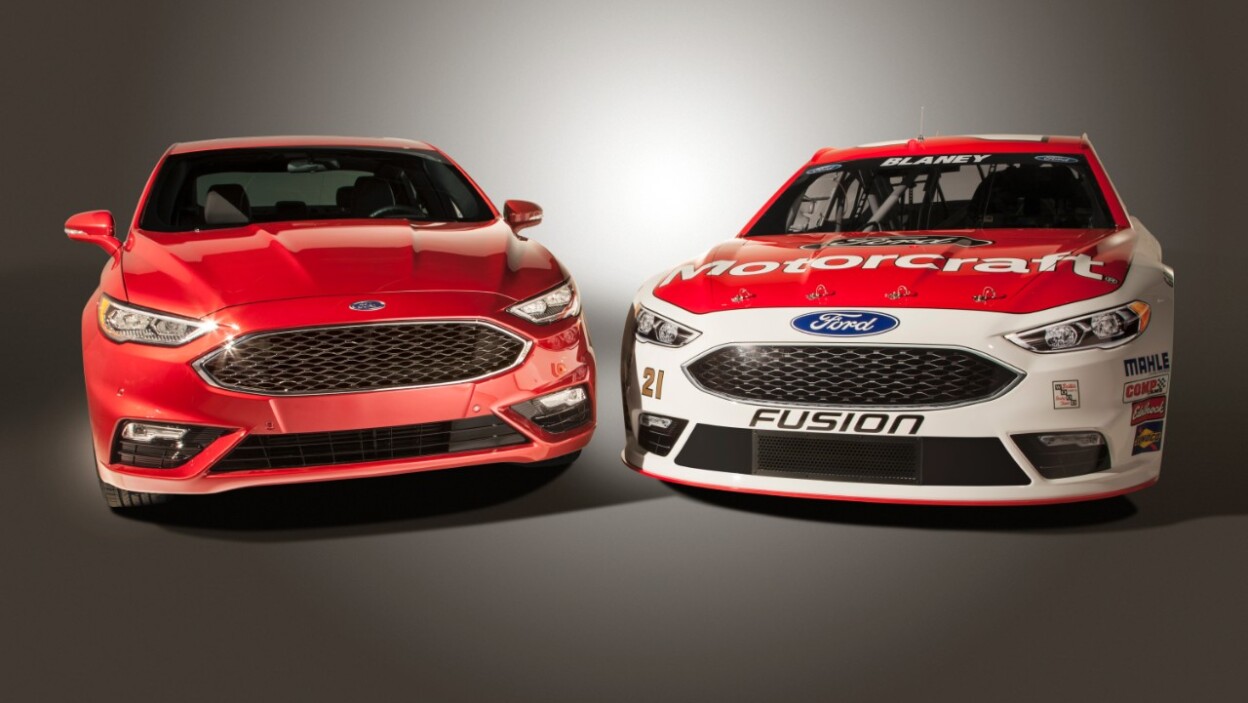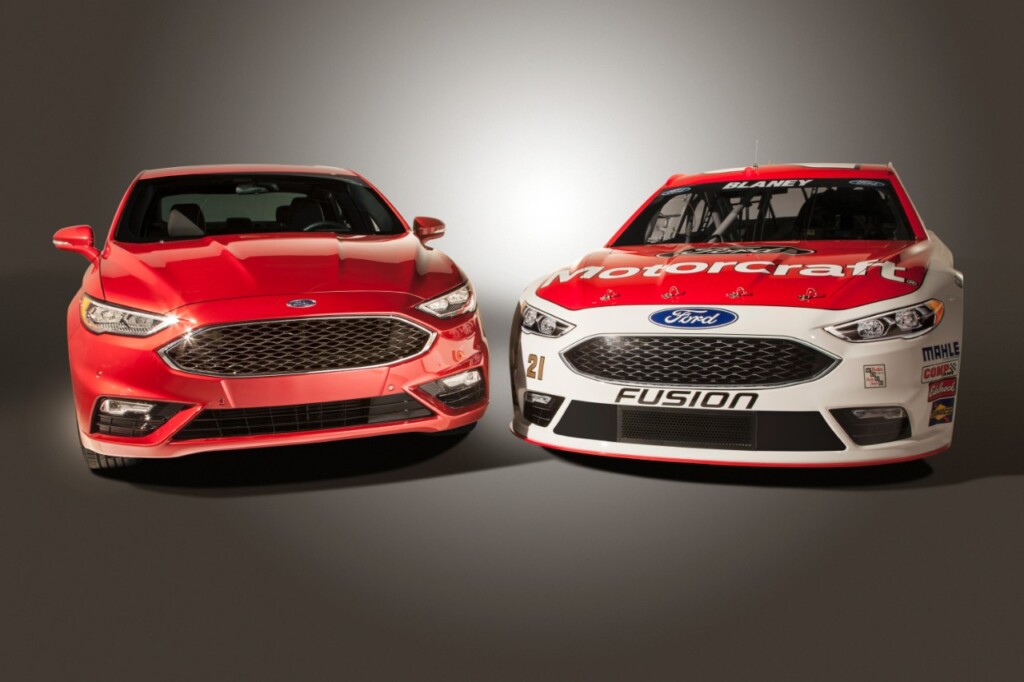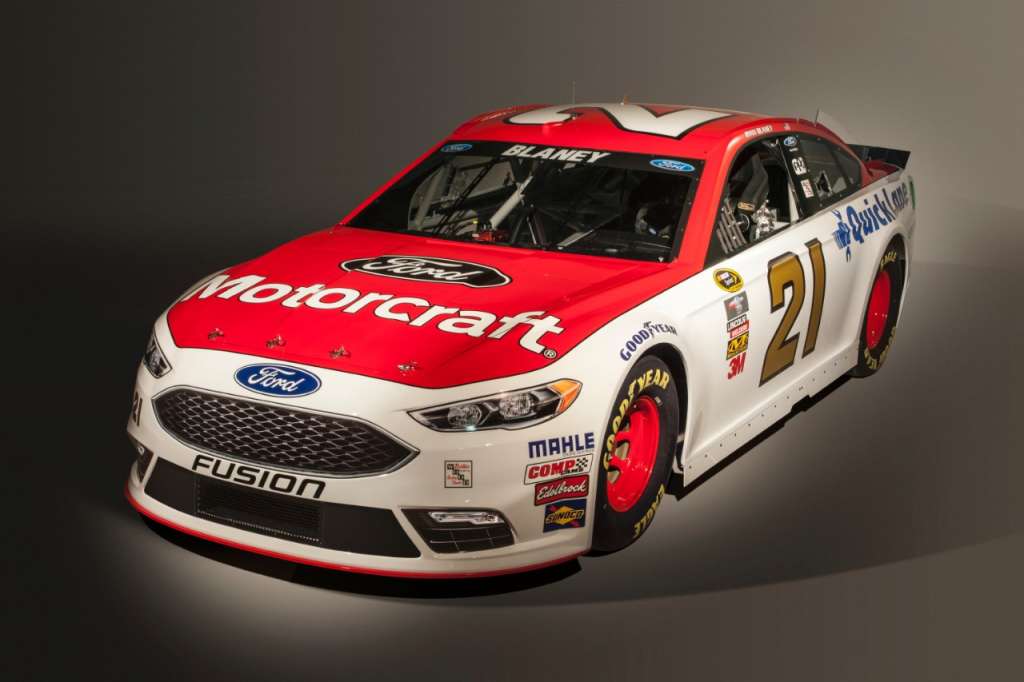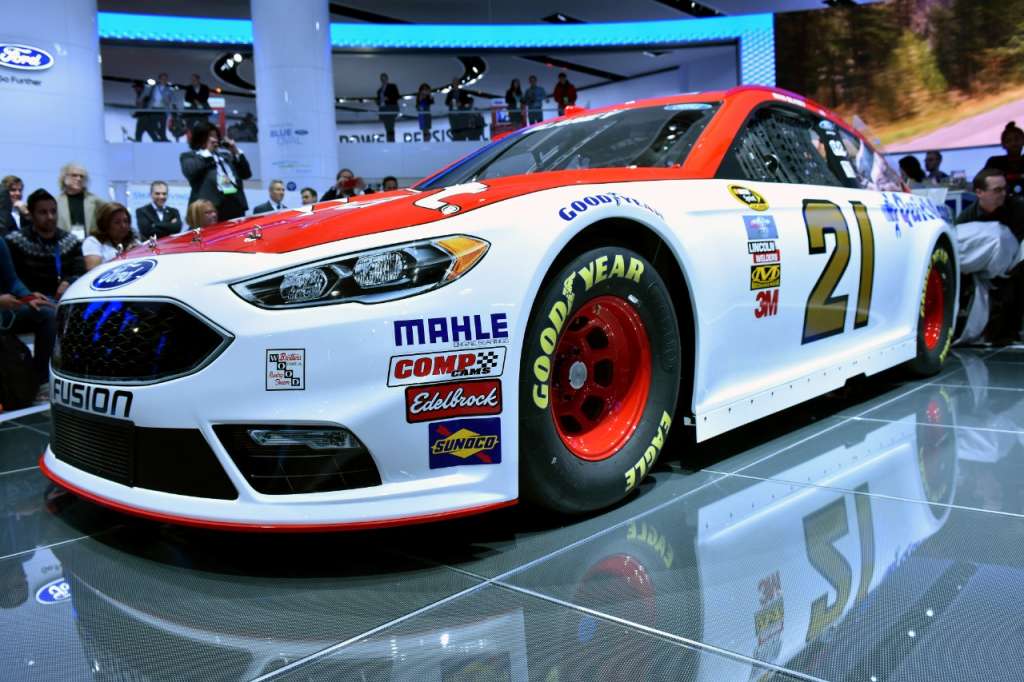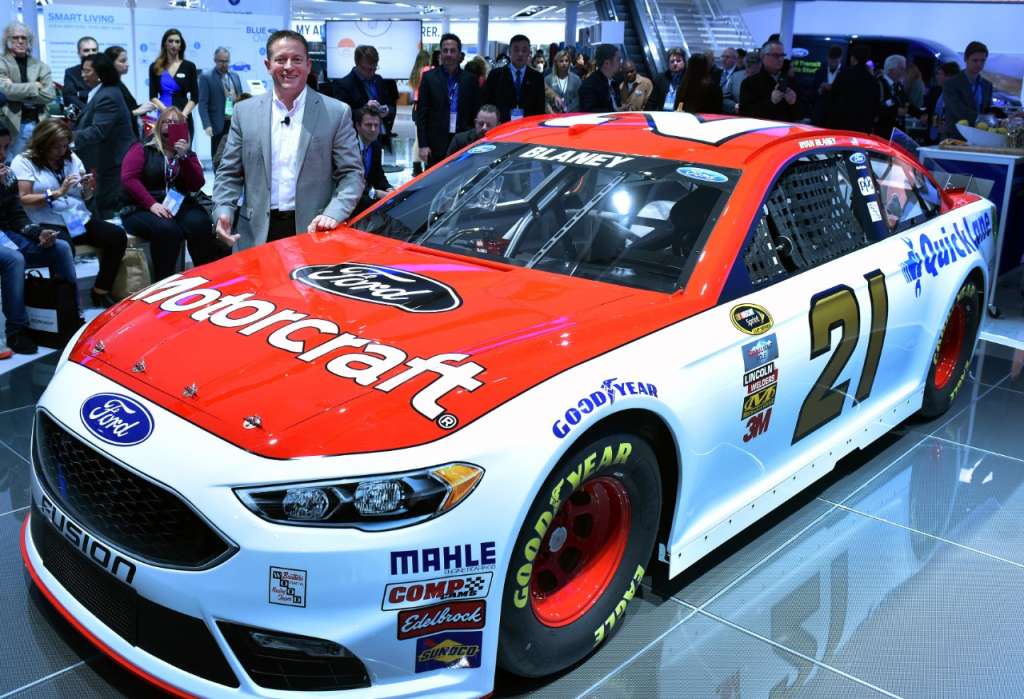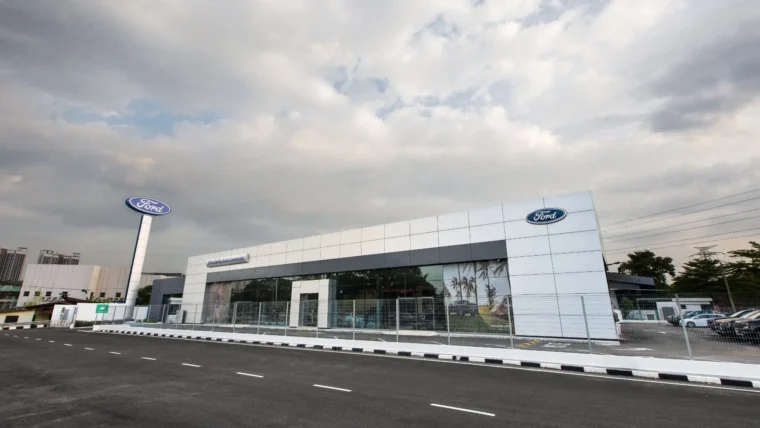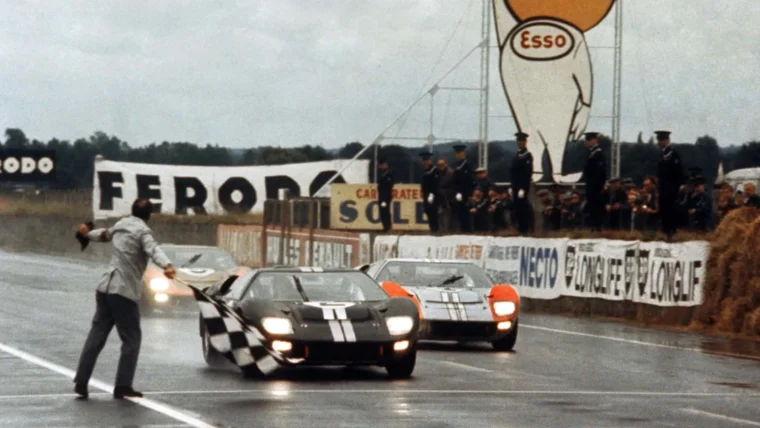History has repeated itself when it comes to the preparing the new NASCAR Fusion for its competition debut in February at Daytona Speedweeks.
Much like 3 years ago when NASCAR allowed manufacturers to include more brand-specific characteristics, Ford once again used the talents of its designers to make sure the same eye-catching components that are included in the new 2017 Ford Fusion production car appear on the racing version.
The result is an aggressive-looking race car capable of producing 750hp at 9,000 rpm under the current rules package.
“There’s no mistaking we’re here to win races and championships,” said Dave Pericak, global director, Ford Performance. “And we believe the new NASCAR Fusion will be a powerful tool in the hands of our teams and drivers.
“Aerodynamics are more important than ever in this sport at the speeds these cars are running, so we used some of the best wind tunnel and computational fluid dynamics technology available to help create this new Fusion, and fortunately the Ford design team gave us a great vehicle to work with from the start.”
The new NASCAR Fusion successfully follows in the tyre tracks of its predecessor by not only mirroring the exterior of its production counterpart but bringing a better interior to the driver.
Ford’s NASCAR drivers will digest more information through a new digital dashboard system that is mandatory for this season. Teams can switch between as many as 16 different preset screens to display information and see information in either bar graphs, numbers or the standard gauge and needle that has been used for years.
This latest technological advancement from NASCAR comes on the heels of several significant changes, including the Gen 6 model that brought brand identity back to the sport in 2013, switching to electronic fuel injection in 2012 and going to an ethanol fuel blend in 2011.
Ford has continued to refine its own technological program as well, opening up the Ford Performance Technical Center in Concord, North Carolina, in 2014, which features a full motion simulator that assists both racing and production car development.
“The Technical Center and the full-motion simulator have been a great tool for our teams and engineers,” said Pericak. “As important as aerodynamics are in NASCAR, it’s also imperative that the computer simulations that assist the teams in arriving at the track with a proper set-up are also best-in-class. We have been working very hard the past year to refine our simulation tools to create a real benefit to our race drivers, as well as the drivers of our new high passenger vehicles.”
The new Fusion will make its race debut at the Daytona 500 on February 21.
Other posts by AF Newsdesk

